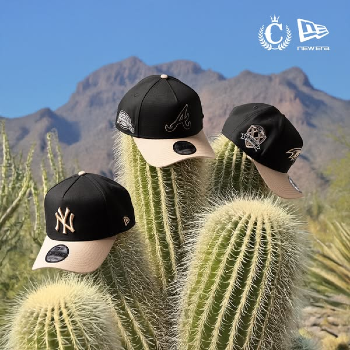The Reverse Bottom-Dollar Effect
🧠 Engineering Satisfaction When Funds Are Low, Pinterest Highlights the Power of Positivity in Ads, and more!


Howdy readers 🥰

In this newsletter, you’ll find:
🧠 The Reverse Bottom-Dollar Effect: Engineering Satisfaction When Funds Are Low
📈 Pinterest Highlights the Power of Positivity in Ads
🏆 Ad of the Day
If you’re new to ScaleUP, then a hearty welcome! You and 50k+ CEOs, CMOS, and marketers have reached the right place. Let’s get into it, shall we? Oh! Before you forget, if someone forwarded this newsletter to you, don't forget to subscribe to our newsletter so you never miss out!

Together with Drivepoint
📢 DTC & Retail Brands: Meet Drivepoint
Two hard truths every brand faces:
📉 Growth Uncertainty – Tariffs, rising COGS, trend shifts, supply chain hiccups, and wholesale draining your capital.
💸 Margin Pressure – Ad inefficiencies, poor inventory planning, and cash flow gaps are eating into profits.
That’s where Drivepoint comes in.
Trusted by brands like True Classic, Curology, and Oats Overnight, Drivepoint is the modern FP&A engine that unifies your Shopify, Amazon, TikTok, retail, and marketing data into a single command center.
All your decisions are powered by real-time insights.
✅ Setup in minutes
✅ Financial planning you’ll actually use
✅ Margin visibility and control
✅ Scenario simulations
✅ Automated forecasting
✅ Investor-ready insights
Stop reacting. Start driving smarter growth. Ask for your Scaleup discount!
Book your free demo now – and see Drivepoint in action!

🧠 The Reverse Bottom-Dollar Effect: Engineering Satisfaction When Funds Are Low
Most brands fear the Bottom-Dollar Effect — the psychological pain consumers feel when making a purchase with their last remaining funds. But what if, instead of avoiding it, brands could harness it?
Welcome to the Reverse Bottom-Dollar Effect — a strategy that transforms those difficult spending decisions into moments of satisfaction and brand loyalty.
Here’s how to make customers feel good about spending their last dollar.
The 3E Framework for Reverse Bottom-Dollar Success
1️⃣ Emotional Framing: Flip Regret Into Gratitude
When funds are low, buyers scrutinize every purchase. Brands that shift the focus from “what’s lost” to “what’s gained” create emotional relief.
- Instead of “Save 20% on your next order”, try “Invest in yourself with our best offer yet.”
- Instead of highlighting the discount, emphasize long-term value. Example:
“Lasting comfort for months, even if your wallet needs a break.”
Case Study: Klarna has seen a 25% increase in repeat purchases using flexible payment plans that reduce buyer regret. By framing payments as manageable and interest-free, customers feel in control of their finances.
2️⃣ Experience Anchoring: Engineer Satisfaction Through Rituals
People justify spending when they feel like they’re paying for an experience, not just a product.
- Introduce post-purchase rituals: “Enjoy your unboxing moment. Let us know how it feels.”
- Add sensory elements: Premium packaging or personal notes enhance perceived value.
- Reinforce through “Experience Memory Loops”: Encourage user-generated content to amplify satisfaction.
3️⃣ Exit Strategy: Provide a Guilt-Free Path
Even satisfied customers might experience buyer’s remorse. Offer a clear, low-friction exit strategy without making them feel trapped.
- Flexible Returns: Position it as a benefit, not a burden.
- Reinforcement Messaging: Validate their decision with supportive emails and tips on how to maximize their purchase.
- Loyalty Rewards: Offer surprise discounts for completing feedback surveys, turning hesitation into satisfaction.
Afterpay reduces regret by allowing customers to split purchases into smaller payments, reinforcing the sense of affordability. Their transparent policies result in higher repeat purchases and brand loyalty.
Mastering the Reverse Bottom-Dollar Effect means understanding that people don’t regret spending — they regret feeling unsure about it. If your brand can replace uncertainty with confidence and pride, even the last dollar spent becomes a joy, not a loss.
The best brands don’t just sell products. They sell satisfaction.

📈 Pinterest Highlights the Power of Positivity in Ads
Insights from Pinterest

Positive environments don't just enhance user experiences — they drive measurable business results. Pinterest’s latest study with MAGNA highlights how ads in positive spaces lead to higher engagement, trust, and purchase intent.
The Breakdown:
- Enhanced Engagement - People are 20% more emotionally engaged on platforms perceived as positive, spending 15% more time looking at ads. Positivity fosters deeper interactions and increased brand recall.
- Stronger Purchase Intent - Platforms viewed as positive drive up to 94% higher purchase intent for high-cost products, 78% for medium-cost products, and 82% for low-cost products. This makes positivity a critical driver across all product categories.
- Trust and Likability - Ads in positive environments are 2x more trustworthy, 1.5x more likable, and up to 94% more impactful in influencing purchase decisions. Safe and positive platforms also generate 25% more impact than entertainment value alone.
- Ad Placement Impact - Where ads appear matters as much as who sees them. Ad environment accounts for 25% of brand favorability, compared to 20% from audience relevance and 55% from creative quality. Brands can drive 45% more impact by aligning with positive platforms without altering creative.
Pinterest is ranked as the No.1 social media platform for instilling feelings of self-worth and purpose, according to a global wellbeing metric.7 For marketers, this makes it a powerful space to build emotional connections, boost engagement, and drive conversions.

🎥 Ad of the Day

What Works:
Using cacti to model the caps introduces a pattern interrupt, a proven cognitive marketing technique. It defies visual expectations, prompting users to pause and take a second look. This disruption marketing move boosts ad recall.
The cactus-and-desert setup likely nods to a specific geographic or cultural reference (e.g., Arizona or Southwest drops), creating contextual relevance for regional audiences.
Despite the unconventional “models,” each cap's logo, color contrast, and detailing are clearly visible. It ensures the hero product—the hat—remains the visual anchor.
What Could be Better:
If this is a special collab or limited edition, the visual doesn’t highlight that exclusivity. Limited drops thrive on urgency and scarcity marketing—none of that tension is visually or textually present.
Broader Insights:
Placing structured streetwear hats on wild desert flora creates visual irony. It’s quirky and Instagrammable, perfect for virality.

Advertise with Us
Wanna put out your message in front of over 50,000 best marketers and decision makers?

We are concerned about everything DTC and its winning strategies. If you liked what you read, why not join the 50k+ marketers from 13k+ DTC brands who have already subscribed? Just follow this.
At ScaleUP, we care about our readers and want to provide the best possible experience. That's why we always look for ways to improve our content and connect with our audience. If you'd like to stay in touch, be sure to follow us EVERYWHERE🥰
Thanks for your support :) We'll be back again with more such content 🥳

